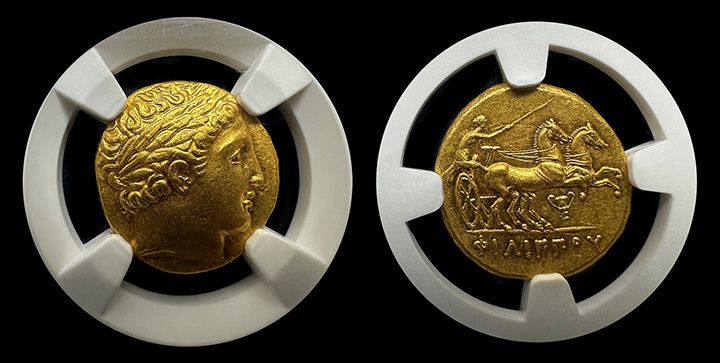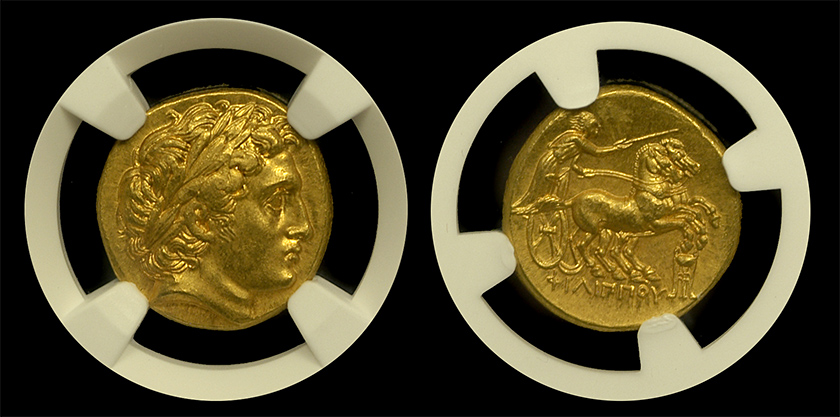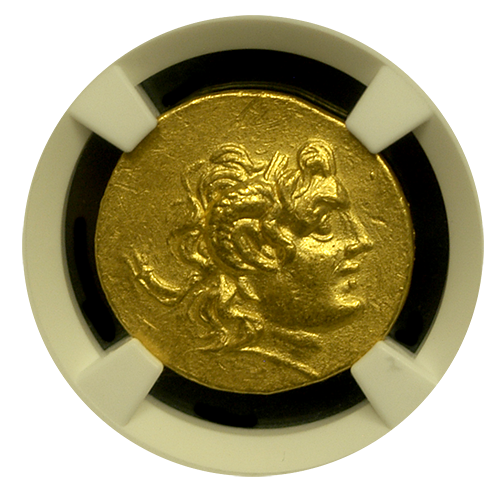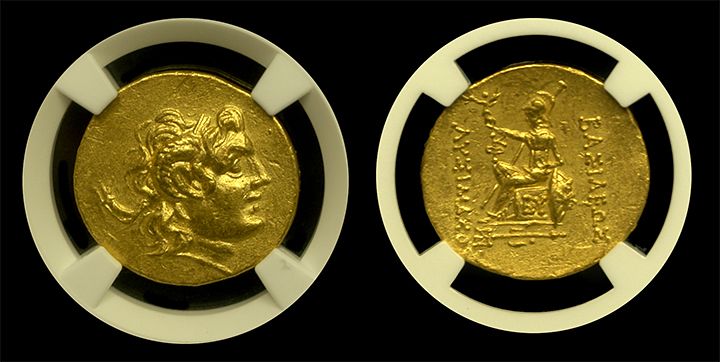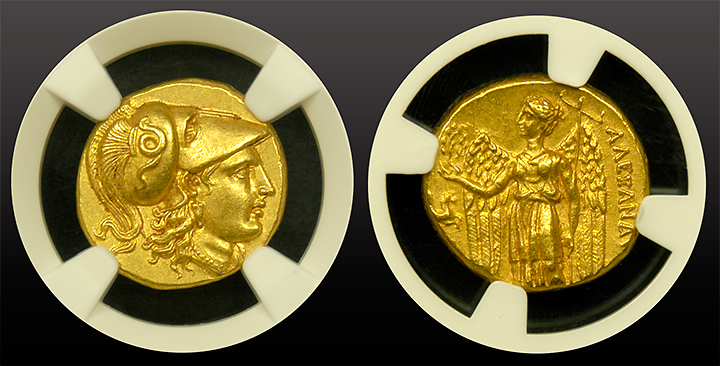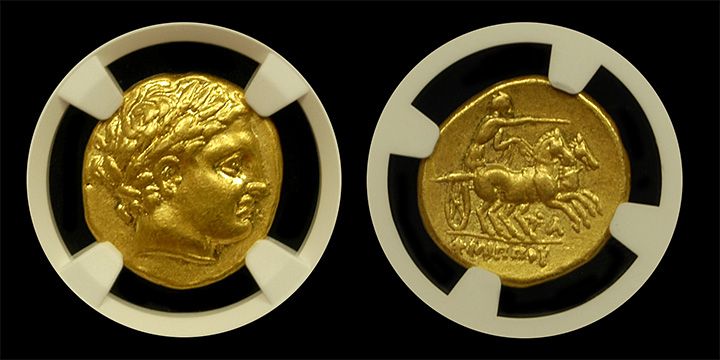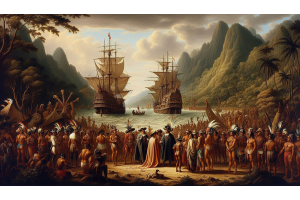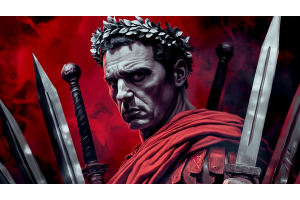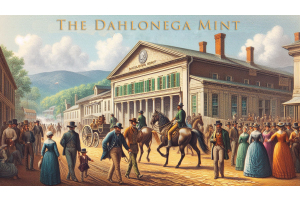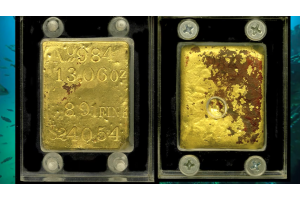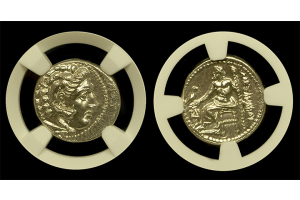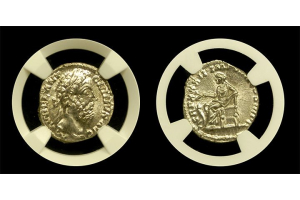Macedonian Empire Gold Stater
- Posted: April 10, 2025Read more »
Conquering Minds
Alexander the Great didn’t just conquer territories. He conquered minds. Furthermore, he used gold to do it.
His armies stretched from Greece to the edge of India. But his influence traveled even farther, thanks to his coins.
These weren’t just currency—they were propaganda. Indeed, they spread his image, ideals, and imperial message everywhere they circulated. They became Alexander the Great's Legacy in Gold!
The Power of a Portrait
- Posted: September 14, 2024Read more »
Early Life and the Division of the Empire
Philip II of Macedonia, the father of Alexander the Great, was one of the most influential figures in ancient history. His rise to power reshaped the region, and his leadership laid the foundation for a powerful Macedonian state. This blog will explore how he came to power, his key accomplishments, the challenges Macedonia faced during his reign, what eventually happened to him, and how he is remembered today.
How Philip II Came to Power
Born in 382 BC, Philip II was the youngest son of King Amyntas III. Political chaos shaped his early life as Macedonia faced external threats and internal instability. After the death of his brother, King
- Posted: March 21, 2023Read more »
In the early 4th century BC Philip II's standardized coinage system of Macedon was established throughout his kingdom. His coins quickly became one of the most coveted coins in the ancient world. One of Philip II's most notable achievements is his standardized coinage system. Additionally, he was also known as a skilled strategist and military leader. Furthermore, through a series of successful military campaigns, Philip II expanded Macedonian territory.
The Philip II Gold Stater was a symbol of wealth and power. In short, it was a testament to the artistry and precision crafted by skilled Greek minters. The coin's weight and measurements ensured its value. Meanwhile, It made it useful for everyday purchases and large-scale military expenses.
Portrait of Alexander himself
- Posted: September 28, 2022Read more »
Was Thrace influenced by Greece & the Macedonian Empire? It is a fact, Thrace was conquered by Philip II, king of Macedonia. This occurred in the 4th century BC. Once Philip the II died Thrace became a part of the great kingdom of Alexander the Great. Following Alexander’s death, his empire was divided among his generals, who established independent kingdoms including Thrace.
Lysimachus, who reigned from 323 to 281 BCE, was the general who succeeded Alexander as the ruler of Thrace. According to Herodotus, an ancient Greek historian, Thrace was highly influenced by Greece and the Macedonian Empire's culture. But, were they?
Yes, Thracian coinage gave homage to the once great leader of the Macedonian Empire. The Thracians under the leadership of Lysimachus used Alexander's portrait on the front of their coins. However, on the back - Posted: September 23, 2022Read more »
Was Thrace influenced by Greece & the Macedonian Empire? It is a fact, Thrace was conquered by Philip II, king of Macedonia. This occurred in the 4th century BC. Once Philip the II died Thrace became a part of the great kingdom of Alexander the Great. Following Alexander’s death, his empire was divided among his generals, who established independent kingdoms including Thrace.
Lysimachus, who reigned from 323 to 281 BCE, was the general who succeeded Alexander as the ruler of Thrace. According to Herodotus, an ancient Greek historian, Thrace was highly influenced by Greece and the Macedonian Empire's culture. But, were they?
Yes, Thracian coinage gave homage to the once great leader of the Macedonian Empire. The Thracians under the leadership of Lysimachus used Alexander's portrait on the front of their coins. However, on the back "Lysimachus - Posted: July 22, 2022Read more »
The world’s first coins were minted in ancient Lydia. Lydia's King Croesus became the first ruler to separate gold from other metals. He issued the world's first pure gold and pure silver coins. The Persian Empire, also known as the Achaemenid Empire, took up the idea of coinage upon defeating King Croesus in 547 B.C. However, it wasn't until Alexander the Great of the Macedonian Empire, who conquered the Persian Empire, that the first international currency evolved. In fact, some believe that Alexander was the father of the first international currency.
Alexander ascended to the throne in 336 BC following the assassination of his father Philip II. He became king at the very young age of 20. In addition, Alexander adopted the Attic coinage standard. Unfortunately, Alexander spent his ruling years conducting lengthy military campaigns and really didn't get to enjoy his conquest much. He was always too busy conquering more lands throughout Western Asia and Egypt. - Posted: March 30, 2021Read more »
Various regions of ancient Greece utilized Staters as coinage. Importantly, in the beginning most of them were made of silver. However, it was ancient Macedonian Empire that first started using Gold Staters. The best known ancient Macedonian Empire Gold Stater was the one from King Philip II of Macedon—340 BC.
It is hard to believe that these coins were struck by hand. Moreover, how could such a beautiful coin be created over 2,400 years ago? Each coin was a hand made example of ancient art. It is no wonder that some of these coins are still considered the most beautiful coins ever made. They were minted in Pella, Macedonia, most importantly known as the birthplace of both King Philip II and his son Alexander the Great.
Philip will always be remembered in history as a brilliant military leader. His victories actually help to shape





